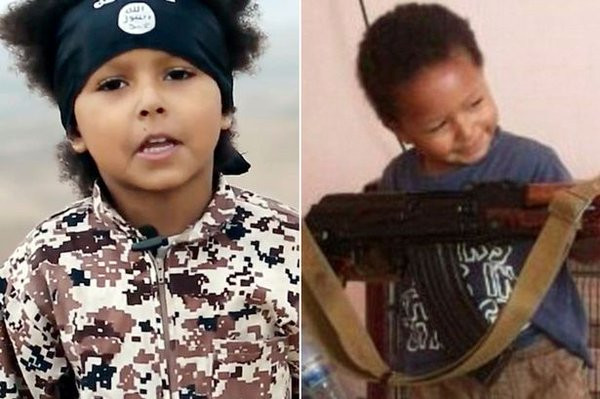Jihadi Junior: Why the British media is right to identify four-year-old Isis poster child

The coverage of the Islamic State (Isis) poster boy dubbed "Jihadi Junior" has sparked debate over the identification of the young child used for propaganda purposes. Those who have released images of him are clearly happy for him to be identified, but should the UK media follow suit – what are the legal and ethical implications in identifying the boy?
The legal aspect is fairly straightforward – there is no law here in the UK which imposes any anonymity upon him. He is overseas, there are no legal proceedings involving him in the UK courts, and so no orders have been made to prevent him being identified.
Even if he were to in Britain, the only point at which an anonymity order could be made would be if criminal proceedings were to begin in which he was in some way involved as a victim or witness, and then a court could make an order anonymising him. If he were to be made a ward of court that might grant some protection, but only to the extent of the reporting of wardship proceedings – it is not a blanket anonymity.
If we were to pixelate this boy, then who else should we have anonymised? Kim Phuk, naked and burned by napalm in Vietnam? Aylan Kurdi drowned on the shores of Europe? Famine victims? Children in concentration camps?
So, if he has no legal protection, do any ethical codes offer anonymity?
The most relevant section of the Editors' Code of Practice, adjudicated upon by the Independent Press Standards Organisation, is Clause 6iii, which says: "Children under 16 must not be interviewed or photographed on issues involving their own or another child's welfare unless a custodial parent or similarly responsible adult consents."
This clause of the code is subject to a public interest exception, and the most relevant section of that would appear to be 1i, which says there is a public interest in "detecting or exposing crime, or the threat of crime, or serious impropriety".
Furthermore, the regulator in such circumstances would also consider to what extent the material is already in the public domain – and these images are already very much in the public domain as they are all over the internet.
The custodial parent is the one that allowed his image to be released for propaganda, so the question then is, would a responsible adult consent to publication of such an image? Perhaps not.
It raises the question of how the press should behave when there has been such an obvious and complete failure of care by adults for a child? Should the press self-impose an anonymity which is not required legally and, it would seem, not required expressly by an ethical code?
There is the argument, often made, that by publishing the images, the media are "giving the terrorists what they want". It is an argument that seems to be made for almost any image that emerges from Syria by those who seem to know better than anyone else "what terrorists want".
Editors therefore have to fall back on their news values and their conscience.
Is this picture news? I would say undoubtedly yes. Does it need to be published at all, or pixelated to anonymise the child? I think it does need to be published, and unpixelated. To anonymise the picture robs it of its humanity; a pixelated picture where you cannot look into the face of the subject does not have anywhere near the same impact on the viewer. That is what you are trying to achieve, to move the viewer, to induce some reaction to the truth of what is happening in Syria.
The harm done to this child by the publicity is as nothing compared to the harm being done to him by those who have taken him to Syria.
If we were to pixelate this boy, then who else should we have anonymised? Kim Phuk, naked and burned by napalm in Vietnam? Alan Kurdi drowned on the shores of Europe? Famine victims? Children in concentration camps?
All over the world, in all sorts of circumstances, children suffer, and to anonymise them denies them their humanity. It makes them easier to look at, not harder, and so easier to ignore.
When you look at that recognisable child, you see not an anonymised blur, but a child who you could see in any playground in this country – but instead he is playing with a Kalashnikov.
David Banks is one of the UK's leading media law trainers and consultants, working with national and regional media, government, NGOs, PR agencies and charities.
© Copyright IBTimes 2025. All rights reserved.






















